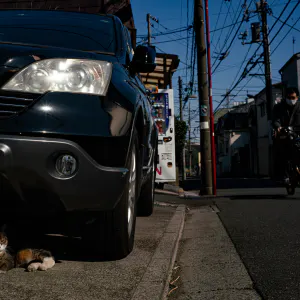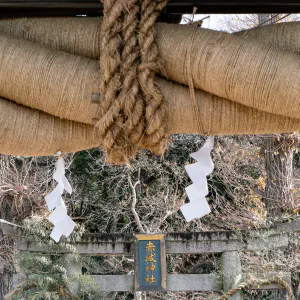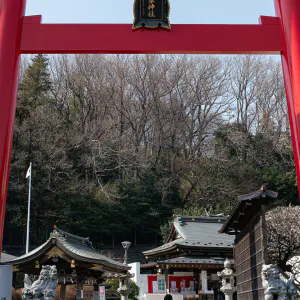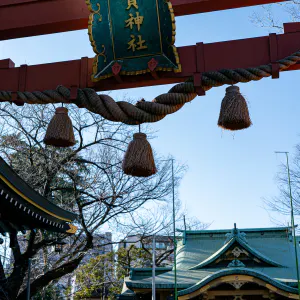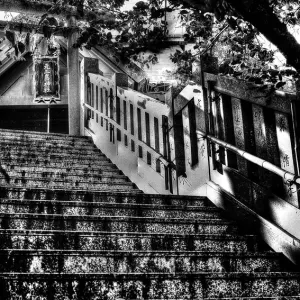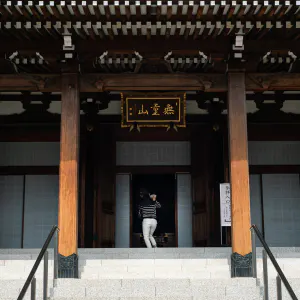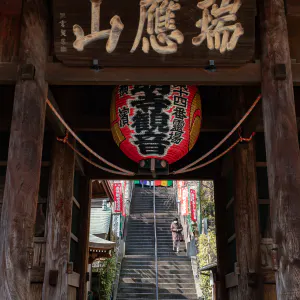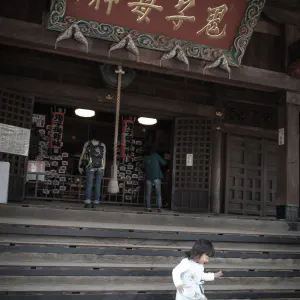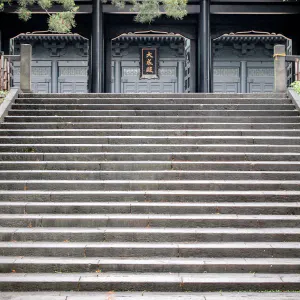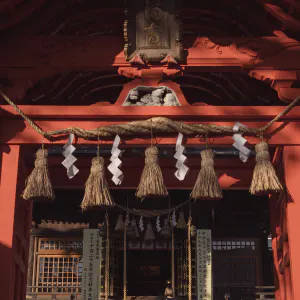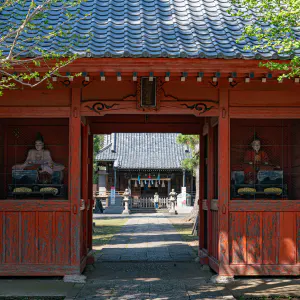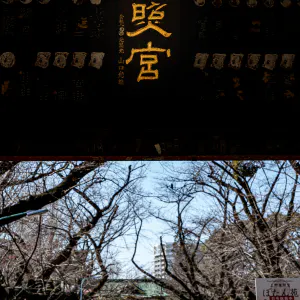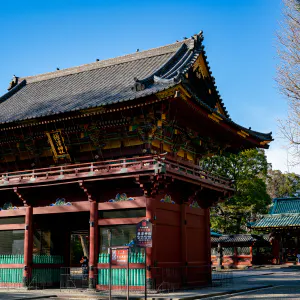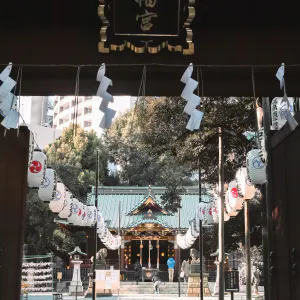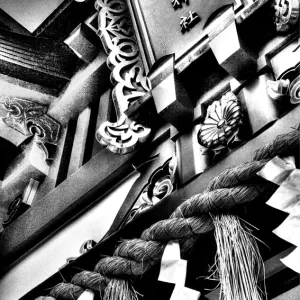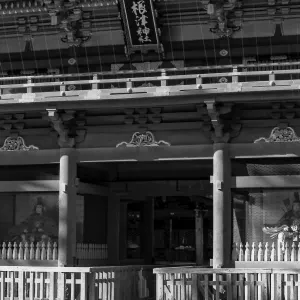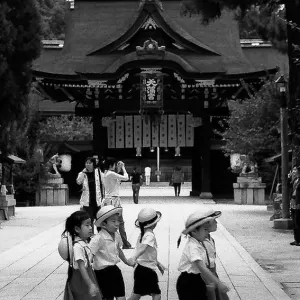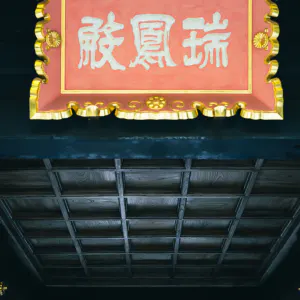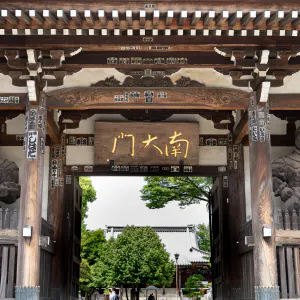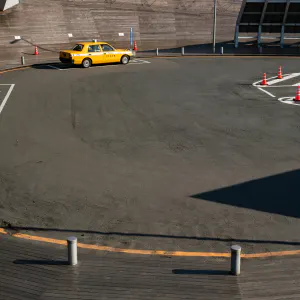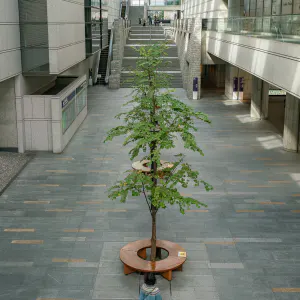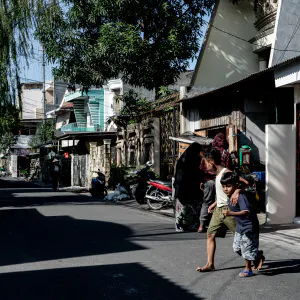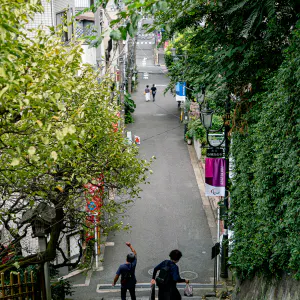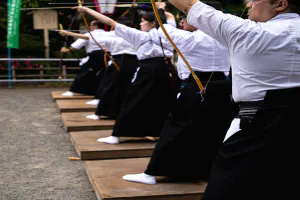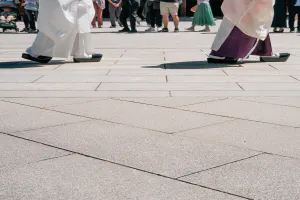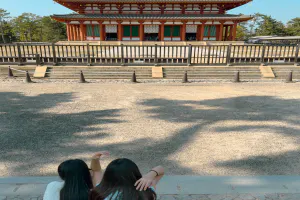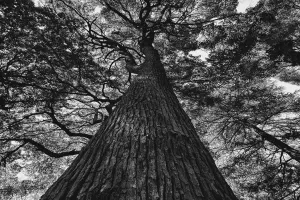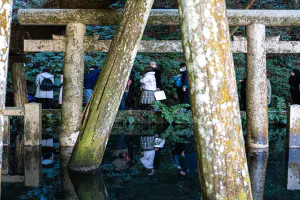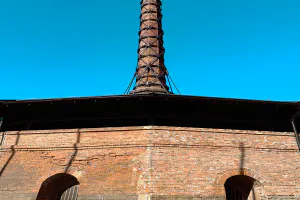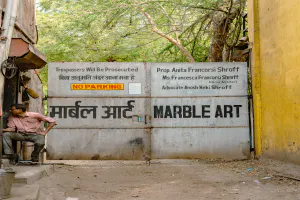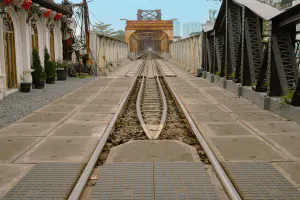The Izumi Kumano Shrine shrine building, visible at the top of the stairs beyond the torii, seems very far away
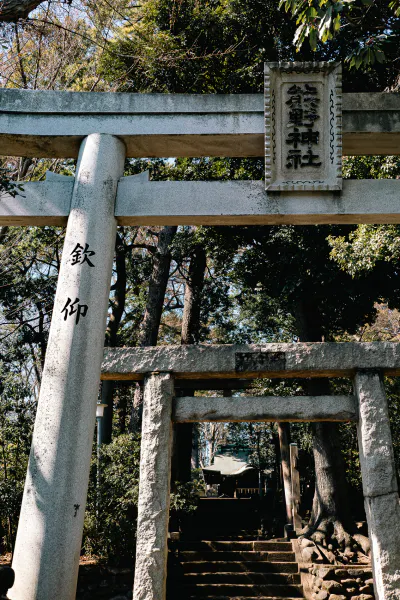
The precincts of Shinto shrines and Buddhist temples in Tokyo are often smaller than those of shrines and Buddhist temples in Kyoto. Even well-known shrines and temples are completely contained within compact precincts. Although the gods may reside there, Tokyo is home to many human beings, and they likely considered the place where they live to be more important than the gods themselves. Tokyo does not have shrines with seemingly endless grounds like Fushimi Inari Taisha in Kyoto.
In the absence of a physically large precinct, the only way to make a small precinct seem as spacious as possible is to make use of the illusion of space. One way to create the illusion of a large precincts is to make it look more spacious by making it less visible by overgrowing the shrine with trees. Izumi Kumano Jinja Shrine, which I visited on this day, was a shrine that seemed to make its precincts seem wider than they are by taking advantage of such poor visibility.
Although there is no shrine grove beside the approach to the shrine, nor are there dense trees, the shrine building looks small at the top of the stairs at the end of the torii gate, making it seem as if there is a considerable distance between the entrance to the approach and the shrine pavilion. The presence of the staircase makes it difficult to see what is going on up there, which is a good thing. In reality, however, it is easy to reach the shrine by climbing the stairs.
| Apr 2022 ARCHITECTURE TOKYO | |
| IZUMI SHRINE STAIRWAY TABLET TORII |
PHOTO DATA
No
12249
Shooting Date
Feb 2022
Posted On
April 28, 2022
Modified On
August 14, 2023
Place
Izumi, Tokyo
Genre
Architectural Photography
Camera
SONY ALPHA 7R II
Lens
ZEISS LOXIA 2/35
